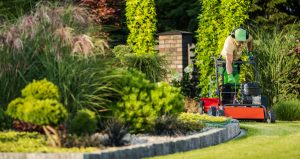
As autumn begins to paint our surroundings with a tapestry of golden leaves and cool breezes, it’s important for homeowners to start thinking about the impending winter. When it comes to home maintenance, one of the most critical yet often overlooked areas is winterizing outdoor faucets and irrigation systems. Properly preparing these components not only prevents costly repairs but also ensures they’re ready for action once spring arrives.
Understanding the Risks of Neglect
Before diving into the steps of preparation, it’s crucial to understand why this task is necessary. Water left in pipes or hoses can expand as it freezes, leading to pipes bursting, hose damage, and potential leaks in your irrigation system. Beyond the immediate physical damage, such leaks can result in increased water bills and potential damage to your home’s foundation or outdoor landscaping elements.
1. Draining Outdoor Faucets
The process of winterizing outdoor faucets can save you from frozen pipes, which can burst and cause significant water damage:
– Turn Off the Water Supply: Locate the shut-off valve typically found indoors that corresponds to your exterior faucets. This might be in your basement, crawl space, or near the point where water supply lines enter your house.
– Open the Outdoor Faucet: Once the water supply is off, return outside and open the outdoor faucet. This will allow any remaining water in the pipe to drain. Leave the faucet open all winter.
– Install Insulated Covers: Purchase outdoor faucet covers that act as a barrier against freezing temperatures. These are often simple styrofoam or plastic covers that snap or strap into place.
2. Detaching and Storing Garden Hoses
Garden hoses left attached to faucets can trap water in the faucet, leading to freezing and potential pipe damage.
– Disconnect and Drain: Detach all hoses from outdoor faucets, draining any remaining water. Starting with the hose’s highest end helps this process.
– Inspection: As you drain, inspect your hoses for cracks or leaks. Any hoses showing signs of damage should be repaired or replaced to ensure longevity and performance.
– Storage: Coil your hoses loosely and store them in a dry location. Avoid storing outside as severe cold can make the material brittle and prone to cracking.
3. Winterizing Irrigation Systems
Irrigation systems require a more involved process due to their complexity. The method may vary based on the type of system you have, but the following are general guidelines:
– Manual Drain: For systems with a manual drain, locate the manual valves and open them to allow water to escape. Ensure each valve remains open throughout winter to avoid pressure build-up.
– Automatic Drain: Some systems are equipped with automatic drain valves. Activate the system briefly to relieve pressure, which triggers the automatic drain to empty the pipes.
– Blow-out Method: Considered the most effective method for preventing freezing, this involves using an air compressor to blow out remaining water from the irrigation pipes. This task is best left to professionals unless you have experience, as incorrect handling of an air compressor could damage the system.
– Insulate Control Valves and Pumps: Protect remaining system parts by wrapping them with insulation; use foam covers or insulating tape on exposed materials.
4. Maintain Regular Checks
Just because you’ve prepared does not mean you can ‘set it and forget it.’ With fluctuating winter temperatures, occasional system checks can help ensure your efforts are lasting through the season:
– Snow and Ice Buildup: Keep snow and ice from piling up around valve boxes or along irrigation pathways. Excess pressure can lead to damage even in winterized systems.
– Regular Inspection: During any warmer spells, take a chance to double-check the condition of outdoor tap covers or exposed pipe insulation to ensure they’re still secure and effective.
– Early Spring Checks: As temperatures begin to rise, perform an early check even before you actively need your taps and irrigation system. Catching issues early can help avoid last-minute scrambling or interim damage.
5. Professional Assistance
While many owners can manage winter prep on their own, complicated systems or those with doubts should consider hiring professionals:
– Inspection and Winterization Services: Many landscaping and plumbing services offer comprehensive winterization services. They’ll take care of draining, insulation, and blow-out processes, reducing risk and ensuring readiness.
– Post-Winter Assessment: Some companies also provide spring start-up assessments, which can streamline the transition back into warmer weather use without headaches.
By performing these essential preparation tasks, you not only safeguard your home and garden’s infrastructure but also ease your peace of mind through the winter months. As a home and garden enthusiast, preventative maintenance reflects the love and care you have for your place, ensuring it remains a sanctuary regardless of season changes. Winter is a time of rest in many ways, but it should not be a period that leaves us hibernating from the responsibilities of stewardship within our outdoor spaces. Stay ahead, stay prepared, and welcome the chill with the comfort of a well-prepared home.













